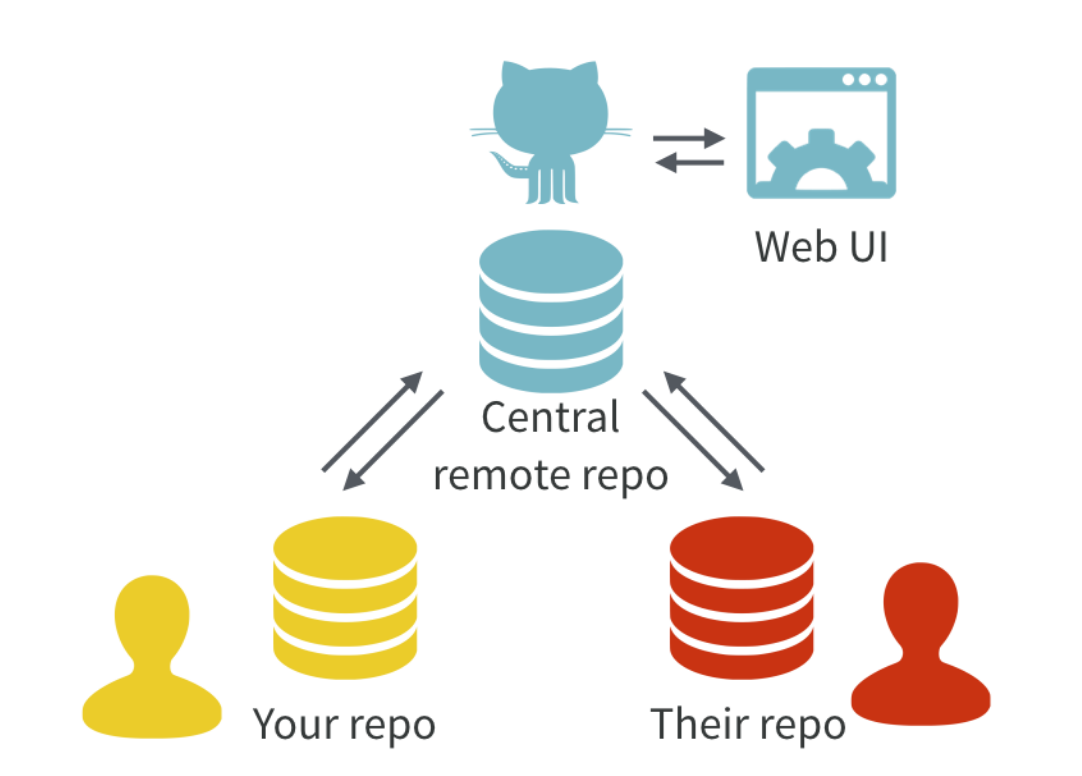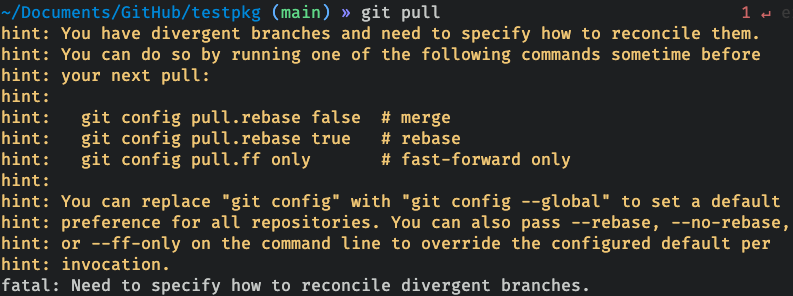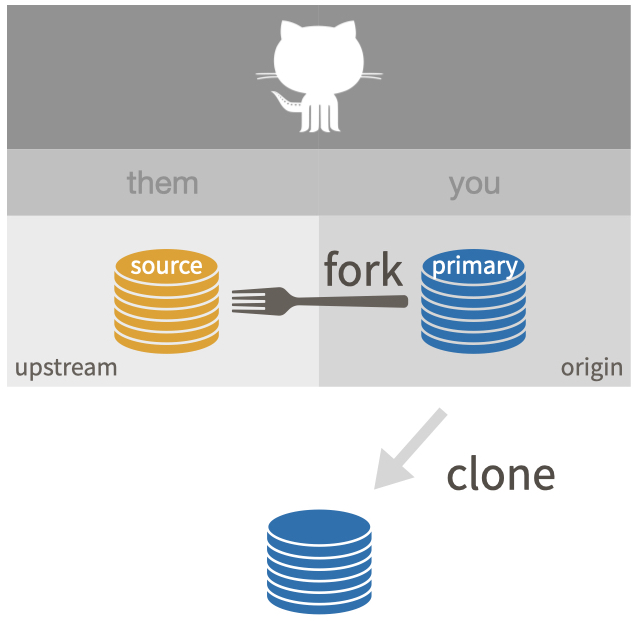gitGraph
commit
commit
branch person_1
commit
commit
commit
checkout main
branch person_2
commit
commit
checkout main
merge person_1
merge person_2
commit
Collaborate With GitHub
Session 6
September 19, 2024
Review
Word Bank
repo | commit | remote | push | pull | add
- A collection of files tracked by git
- A snapshot of the state of a repository
git___ is used to tell git to track a file- For example, a repo on GitHub
git____ is used to synchronize changes on your computer with a remote
Review
What difficulties did you have while putting your repo on GitHub?
Collaborating with GitHub

Example repo
Everyone practice cloning this example repo as a new RStudio project: https://github.com/cct-datascience/demo-repo-2024 1
Need one volunteer to edit the README.md and practice commit + push
Dealing with Conflicts
What happens when two people make conflicting edits to a file and push them?
Creates a merge conflict
![]()
Ok, try git pull

Merge, rebase, fast-forward??
These are alternative ways to deal with conflicts—we won’t get into the details
For now, we recommend you stick with the “merge” option
Fixing a Merge Conflict

Resolve the conflict however you want (i.e. keep one of the two sections)
Delete all lines with
<<<<<<<,>>>>>>>, or=======Save and commit
Avoid merge conflicts by working on branches
Each person works on a “branch”—an independent series of commits that can be merged back into the “main” branch.
Working on a Branch
Make a new branch using RStudio’s Git pane (for this demo, use your name)
Make some edits (e.g. to README.md), save, add, commit.
You can go back to the “main” version of your project at any time.
Working on a Branch
Push your branch to GitHub
View changes on GitHub
Pull Requests
A request to merge changes into the main branch
Need another volunteer to share screen and be guided through making a pull request
This time, everyone can follow along!
Forks
What if you don’t have permission to push to a GitHub repo but you want to contribute?
Make a fork!


Collaborating with Forks
To contribute to a repo you don’t have push permission for:
- Fork the repo to your own GitHub
- Clone the fork to your local computer
- Make commits (ideally on a branch)
- Make a pull request to the upstream repo
Tip
Learn more, including handy usethis shortcuts: https://happygitwithr.com/fork-and-clone
Practice
Exercise
In pairs, practice forking and cloning a demo repo you do not have permission to push to: https://github.com/cct-datascience/demo-repo-fork-2024.
Make a new branch, make commits, and make a pull request to the upstream repo.
Resources
#git channel in UA Data Science Slack
Your Tasks
For the next update to your colloquium project, practice using a branch and and pull request on GitHub
Clone a repo you do not have permission to push to without forking it and see what happens when you try to use
git pushFork and clone a repo on GitHub to explore it (e.g. a lab mate’s code, a research compendium, your favorite R package)

